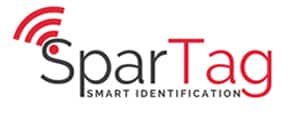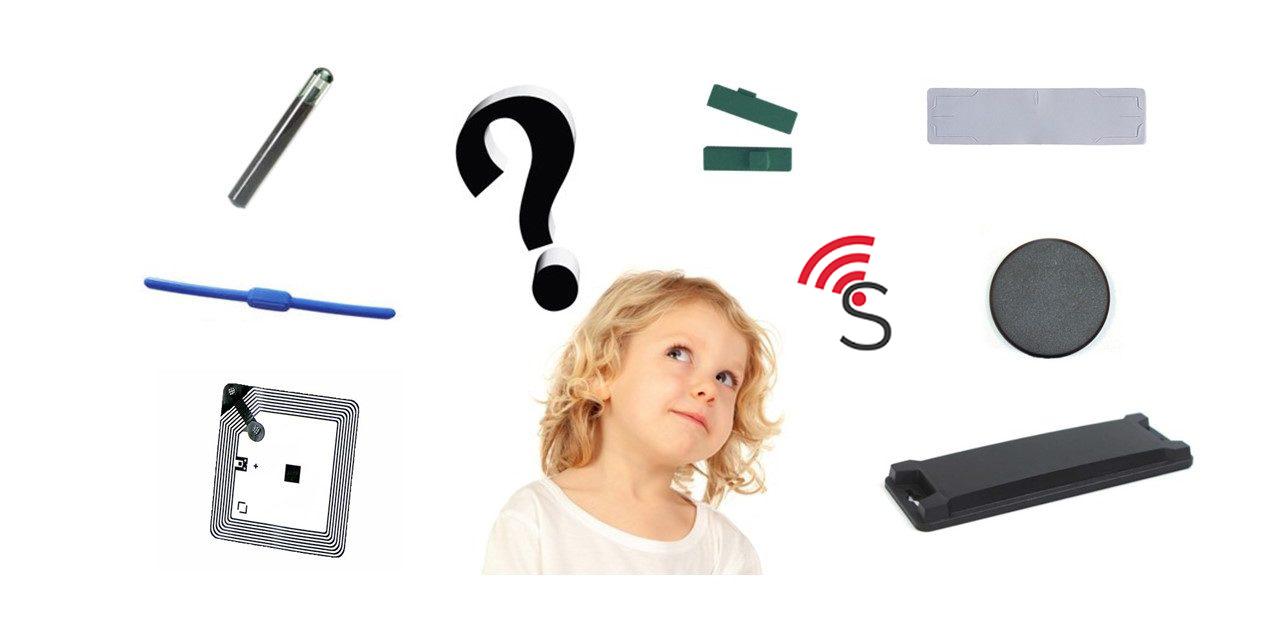How to choose an RFID tag?
Often times, choosing the right RFID tag for a given application is more complex than you might think. The choice of the tag must take into account several parameters including the type of associated reader, the technology, the frequency band, the temperature, etc. SparTag has a wide range of RFID tags and can assist you in this choice, in this blog we describe the right questions to ask yourself in order to understand how to choose an RFID tag according to its application:
Step 1: Which RFID technology corresponds to my application?
Case 1: My application requires identifying tags at a distance of 1 to 15m in order to carry out inventories, control incoming and outgoing goods, monitor maintenance operations on equipment, anti-theft security, access control, etc. etc. In this case, a passive RFID tag should be used. This technology allows the tag to self-power through the transmitter’s magnetic or electromagnetic fields, it does not use a battery, and its cost is much lower than other technologies.
Case 2: In addition to the needs described above (Case 1), my application requires taking readings of temperature, acceleration, intensity, gyroscope or other physical parameters that will be sent to a reader. In this case, a semi-passive RFID tag should be used. This technology embeds a battery to power the electronic circuit of the sensor, the communication principle as well as the reading distance remains identical to that of the passive tag, however, the application is more complex and requires regular replacement of the batteries.
Case 3: In addition to the needs described in Case 2, my application requires identifying tags at great distances (up to 150m). They are often used to geolocate tags and / or take readings of physical quantities in real time such as temperature, gyroscope, GPS, etc.
In this case, an active RFID tag should be used, this technology requires the integration of a battery, sensors, a data processing unit (microcontroller) as well as a radiofrequency transmitter making it possible to communicate with a terminal via a defined protocol. The active tag is much more expensive and requires more frequent maintenance than the semi-passive RFID tag.
Passive technology constitutes 70% of tag sales in industrial settings, so we will pay particular attention to the choice of the passive RFID tag to help you in your thinking.
Step 2: How to choose a passive RFID tag?
To select the best RFID tag according to its application, here are the questions that must be asked:
1) What is my environment?
-
Are the tags placed indoors or outdoors? (Tag resistance to bad weather, shocks, dust)
-
What are the maximum and minimum temperatures to which the tags will be subjected? SparTag offers a wide range of high temperature tags
-
Is the RFID tag subject to chemical attack, vapor, pressure? SparTag offers autoclave tags as well as textile tags (laundries) specially designed to withstand these constraints.
-
Does the environment present electromagnetic constraints (EMC)?
2) What is the reading distance?
The reading distance is mainly defined by the chosen frequency band, in fact, the 3 frequency bands mainly used in RFID are LF (Low Frequencies), HF / NFC (High Frequencies), UHF (Ultra High Frequencies). Also, fixed readers have a much greater reading distance than mobile readers thanks to the size of the antennas used.
Case 1: Your application requires a range of a few cm, in this case, you should use the LF (125Khz for industry or 134kHz for animal identification)
Case 2: Your application requires a range of up to 50cm, in this case, you should use HF / NFC (13.56MHz) the reading distance as well as the data transmission speed are higher than with the BF, however, the cost is greater
Case 3: Your application requires reading distances of up to 15m, in this case you should use the UHF frequency band (865-868MHz in Europe), note that the UHF frequency bands are different from one continent to another. It will be possible to act on the reading distance by modifying the power emitted by the reader. The directivity as well as the width of the emitted beam can be controlled by the choice of antenna, SparTag offers a wide range of short and long range RFID antennas.
3) What is the nature of the product to be identified?
What type of surface? The material of the object is an essential element to take into account. A metal surface strongly modifies the performance of a tag, SparTag offers a wide range of metal tags. Note that liquids greatly reduce the range of the RFID tag. The shape and size of the object? SparTag offers different dimensions as well as several types of flexible tags and labels compatible with different shapes (pipe, textile, cardboard, etc.) to help you choose an RFID tag.
4) What is the fixing method?
There are over 300 types of adhesive, however, SparTag uses 3:
-
Adhesive Standard
-
3M reinforced adhesive
-
Reusable adhesive (a tag can be peeled off and glued to another surface while retaining its properties)
Other fastening methods can be considered such as molding in materials, the use of fixing nails, hose clamps, etc.

